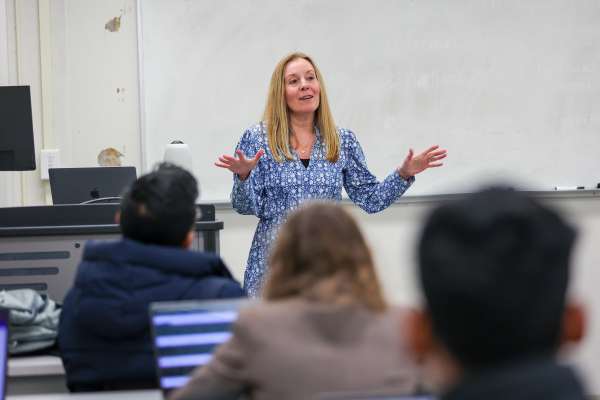'Behind the Blue': University of Kentucky Researcher Leads $3 Million Addiction Treatment Study
The University of Kentucky recently received $3 million from the National Institute on Drug Abuse and National Institute on General Medical Sciences to fund new opioid-related research in the criminal justice system.
Known as the Geographic variation in Addiction Treatment (GATE) study, the five-year project is led by Carrie Oser, professor of sociology in the UK College of Arts and Sciences. Oser and her colleagues will be focusing on the factors that influence a person’s decision to use one of the three FDA-approved medications for the treatment of opioid use disorder (OUD) — methadone, buprenorphine and extended-release naltrexone.
Although research shows that these medications are highly effective at reducing opioid use, infectious disease transmission and drug-related criminal behavior, uptake of these medications is low — only about 7% of people with OUD receive medications — and more than half of Kentucky counties do not have any providers who prescribe medications for OUD. It is even more challenging for those involved in the criminal justice system. In the past few years, the Kentucky Department of Corrections has addressed this issue by making naltrexone available inside their institutions and is currently piloting expansion at three prisons by offering buprenorphine to individuals with OUD who meet clinical and medical protocols.
On this episode of "Behind the Blue," Oser talks with UK Public Relations and Strategic Communication’s Allison Perry about the GATE study and its goals to identify how a person’s individual characteristics, personal networks and structural factors influence their decision whether or not to take medication for OUD both during incarceration and following release, and it will specifically look at the differences between urban and rural populations. While other studies have looked at individual and structural factors as predictors of medication use, this study is unique in its focus on the people surrounding the person with OUD and how their support — or lack thereof — and opinions influence decisions on taking medication.
"Behind the Blue" is available on iTunes, Google Play, Stitcher and Spotify. Become a subscriber to receive new episodes of “Behind the Blue” each week. UK’s latest medical breakthroughs, research, artists and writers will be featured, along with the most important news impacting the university.
For questions or comments about this or any other episode of "Behind the Blue," email BehindTheBlue@uky.edu or tweet your question with #BehindTheBlue.
To discover what’s wildly possible at the University of Kentucky, click here.


